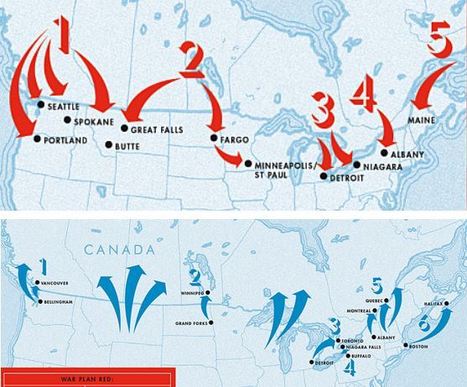After World War I, Canada drew up classified plans to invade the U.S. Meanwhile, the U.S. had its own secret plot to create the "United States of North America."
Get Started for FREE
Sign up with Facebook Sign up with X
I don't have a Facebook or a X account
 Your new post is loading... Your new post is loading...
 Your new post is loading... Your new post is loading...
|

megan b clement's curator insight,
September 10, 2013 12:38 PM
"The North Pole ice thinning, another over looked issue, has risen to the surface. Over the past 100 years 50-75% of the sea ice has disappeared. Old ice, which is formed over several years, has been replaced with new ice. New ice come and goes through the year it was formed. Travel has been accelerated in the North Pole due to thinner ice. It makes you think about if these circumstances worsen where will it leave the marine life or animals who inhabit this region. What will be the result in the years to come if we continue to over look this issue?" |













It's very interesting to see how neighbor countries don't really get along as to how one thinks they would. Who would of thought Canada actually had plans to invade the U.S.? Isn't it a good thing to have your allies like best friends? Canada had this plan during the 1920s and had 5 intrusion entries. its interesting to see how one of the intrusion points would of been Seattle. In my opinion, this could of been a really bad for both countries. Overall, now I would like to know how 'well' the relationship is between the two countries.